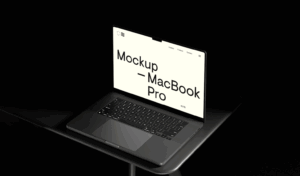If your MacBook has started feeling more like a sleepy tortoise than a lightning-fast workhorse, you’re not alone. Over time, even the best Macs can slow down — whether from overloaded storage, too many background processes, or just plain digital clutter. The good news? You don’t need to be a tech wizard to give it a boost.

Here are five simple steps to speed up your slow MacBook and get it running smoothly again.
1. Declutter Your Storage
A near-full hard drive is one of the most common reasons Macs slow down. To check your storage:
- Click the Apple menu → About This Mac → Storage.
- Delete old files, large downloads, and unused applications.
- Empty your Trash and clear your Downloads folder regularly.
Tip: Use iCloud Drive or an external SSD to store files you don’t need to keep on your MacBook all the time.
2. Manage Startup Programs
If your Mac takes forever to start, too many apps might be launching when you boot up.
- Go to System Settings → General → Login Items.
- Remove apps you don’t need to open automatically.
The fewer apps starting at boot, the faster your Mac will be ready for action.
3. Keep macOS Updated
Apple regularly releases updates that fix bugs, improve performance, and boost security. Running an outdated version can slow things down.
- Open System Settings → General → Software Update.
- Install the latest available macOS version.
This small step can make a big difference in overall speed.
4. Clear Browser Clutter
If your MacBook is slow mostly when browsing the web, your browser could be the culprit.
- Clear browsing history, cache, and cookies.
- Disable or remove unnecessary extensions.
Also, keep the number of open tabs reasonable — each one eats up memory in the background.
5. Give Your RAM a Break
Too many apps running at once can overload your Mac’s memory (RAM).
- Close unused apps instead of leaving them minimized.
- Check Activity Monitor (search in Spotlight) to see which apps are using the most memory and CPU power.
If you find your Mac constantly struggling, it may be time to consider a RAM upgrade — if your model allows it.
Final Thoughts
A slow MacBook doesn’t mean it’s time to buy a new one. With these five steps, you can breathe new life into your machine and get back to working, browsing, and streaming without frustration.
And remember — like any device, your MacBook benefits from regular maintenance. A little digital housekeeping now can save you from major slowdowns later.